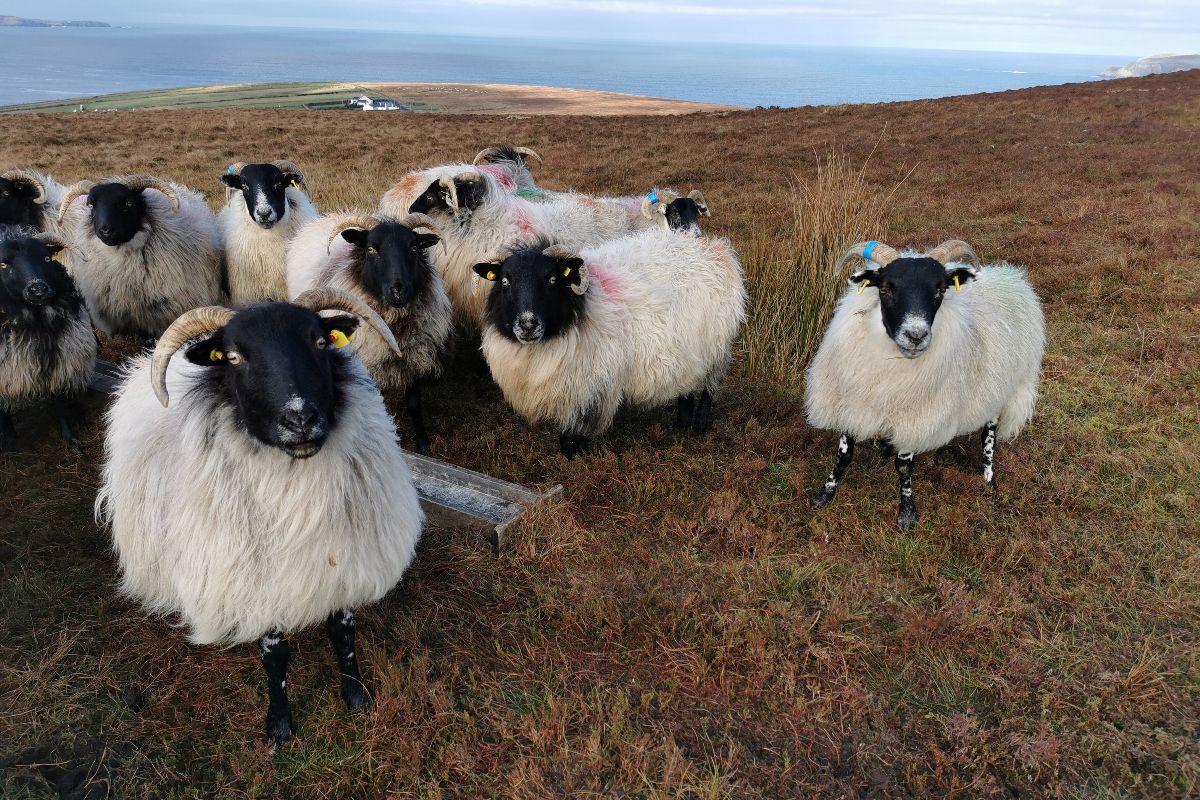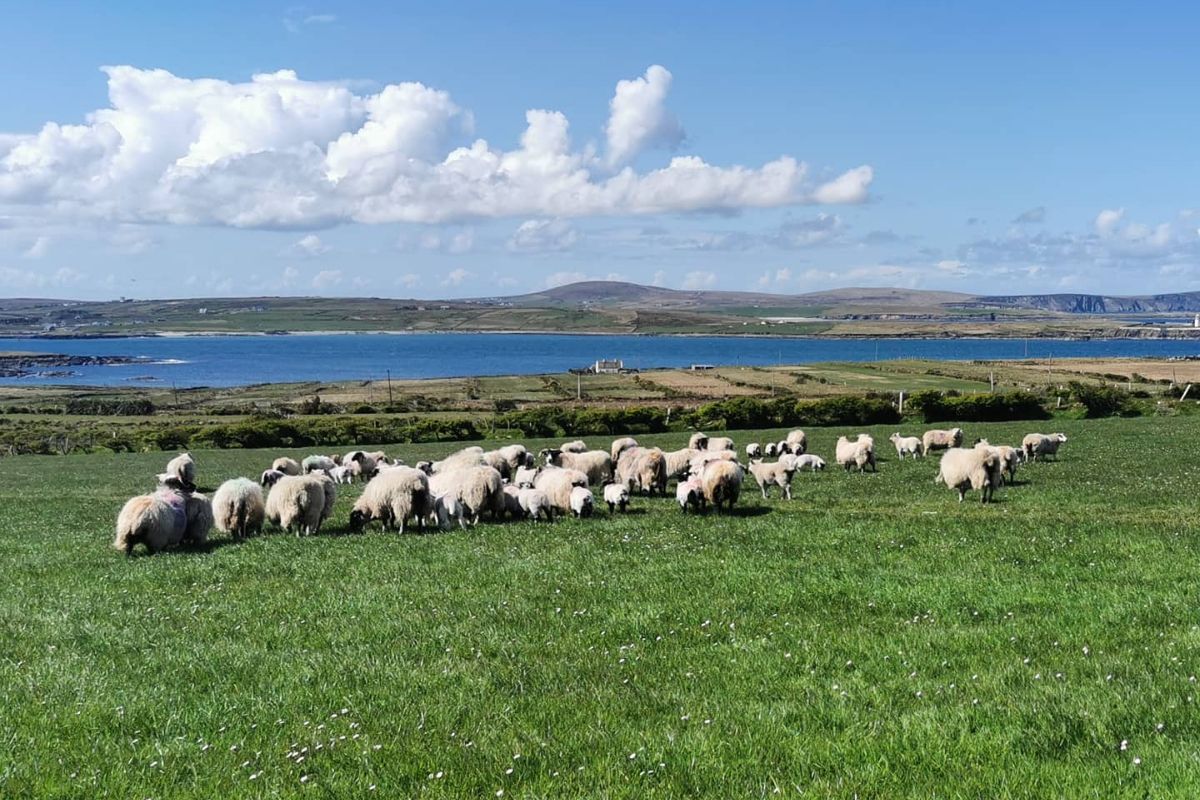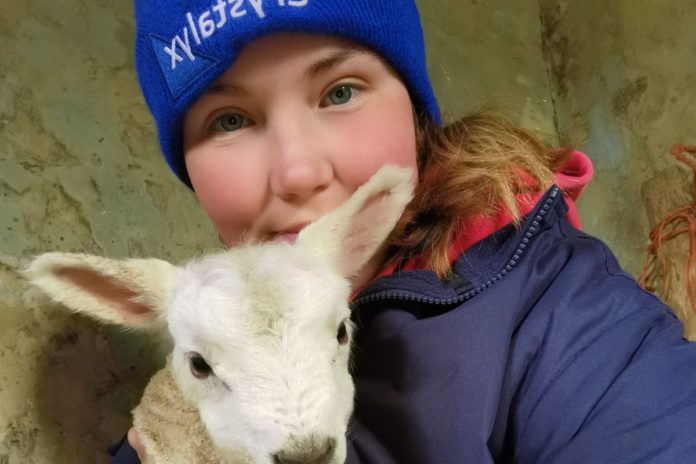In this week’s sheep farming segment, That’s Farming, speaks to Aileen Cafferkey, a 26-year-old part-time sheep farmer and sheepdog trainer.
26-year-old Aileen Cafferkey is a 60-ewe farmer and avid sheepdog trainer.
She hails from a small village in the west of Ireland, approximately 12 miles from Belmullet, Co Mayo, where she runs Portmór Farm with her father, John.
Aileen farms on a part-time basis whilst working for a manufacturing company, an outdoor lighting control specialist.
She told That’s Farming: “Farming has always had some part in our family. The farm has been in our family for generations gone by, and hopefully, it will continue for many years ahead.”
“I have lots of farming memories. I was practically reared in the field! My earliest memory would probably be when I received a pet lamb from my uncle-in-law, a Suffolk-type.”
“She made one of the best ewes we had at the time. Between twins and triplets and plenty of milk, she made a great mother. She was my first own ewe. “
“I have many memories of taking off from a very young age, often without my parents even knowing, up to my neighbour’s sheds and fields.”
“Telling him which ewe had which lamb, he could never understand how I did it. Even to this day, my father is baffled by it,” she laughed.
Sheep enterprise
Whilst the farm is now home to a flock of sheep, previous generations farmed cattle.
Her grandfather had cows, which was before her time, whilst her father also carried on the tradition for a period. “I was too young to remember, but he has filled me in with stories and pictures,” she remarked.
Her father oversees the operation’s running on a full-time basis, whilst flexible off-farm employment means she can assist when required.
“With four days on and three days off and only 15 minutes from home, it is handy. I am back in time to do what I need to in the evenings and have weekends off.”
“Even though it can seem like all I do is work, train and farm, I enjoy it so much. I make the most of getting outside; it is good for the head,” she added.
The flock comprises mainly Mayo Blackface, some cross-breds and Lanarks, and a Lanark and Rouge ram.

Outdoor lambing
They operate an outdoor lambing system from the end of March through to mid-April but plan to lamb earlier, from the end of February to the start of March next year, to finish progeny quicker.
“Ewes all lamb on commonage. We bring up any that are weak or any with problems and house them inside until they are strong enough.”
“We would rather lamb outside; it is more natural, and they grow hardier. That is another reason we go for mountain-type sheep; they require no assistance.”
“This year was slightly later for lambing as we went on grass quantity and weather. But next year, we will go earlier. We had a few stranglers at the end of February this year, and you can see the difference.”

Breeds
Considering the land, they farm on, primarily hill/rough ground, Mayo Black face and Lanarks are an ideal selection. They are known for their hardiness, maternal traits and ability to withstand harsh elements.
“I bought pedigree Lanarks last year; unfortunately, they have not gone to plan, but that is farming, I guess. There are plenty of ups and downs, but we will go again next year. I hope to purchase more and grow the flock of Lanarks.”
“My motto is quality over quantity. Lanarks would be a breed I would love to strive in. I do like the Mayos, but, in my opinion, the Lanarks are a slightly heavier breed.”
“They make great mothers, have milk traits and resistance. Also, they are hardy enough to withstand our weather conditions and are suitable for hill ground.”
“I would love to try a teaser ram. I know we do not have a massive flock. But with lambing outside and going on grass quantity, it would suit better rather than having ewes all over the place.”
Depending on prices, they finish ram lambs and sell by weight in their local mart. On the other hand, they retain some ewe lambs as replacements and sell the remainder at their local mart or privately. In previous years, they have sold some to their local butcher.

Grassland
Grassland management is an important practice on the enterprise – solely because of their geographical location.
“Where we are, I find this the biggest challenge. We are right on the coast; you can imagine the scenes we have during winter with the weather. It is hard.”
“I suppose we are lucky as we have hill ground, giving the grassland a break. Getting land around home to rent or for sale is also a challenge as I would love to expand in that aspect.” the part-time sheep farmer added.
“Grass is something we have to make sure we managed correctly so that our lambs, in particular, get the best to thrive.”
“We will be reclaiming land this year to get the most out of what we have. Also, we plan on paddock grazing the ewes; it is becoming more common in our area the last few years.”
“Every day is different. Lambing is my favourite time. I enjoyed it more this year by putting a ram I had purchased myself to the ewes. It was nice to see he produced well. I was lucky, or I would have got a grilling,” she added.
“There are always bad days, months, years, especially when starting. I have witnessed it myself; things go bad that sometimes you cannot control. Start small and choose a breed that suits you and your system. Most importantly, do not be afraid to ask others for advice.”

Sheepdogs
In addition to sheep farming, the Mayo native has recently ventured into sheepdog training. Her journey began when she purchased an unregistered bitch pup.
“This is something I should have done a long time ago and one I regret. I have read all the books, watched all the videos, but nothing beats talking to others.”
“There is something about watching a dogs confidence grow each time he/she enters a pen or field of sheep.”
Her main goal is to produce her own bloodline of working sheepdogs in years to come. “It is a long process, but I know I will put in the work as I enjoy the training so much,” she added.
“The last year or two, even with Covid and lock-down, has given me opportunities I probably would not have gotten in normal circumstances, purchasing my own sheep and my own working sheepdogs.”
“I would like to participate in sheepdog trials. It made me realise what I really want in life, what I love doing and to make sure I grab opportunities while I can.”

Goal setting
And with that in mind, her ultimate goal is to expand the farm, rent land that may become available, and become a reputable breeder of Lanark sheep.
The father and daughter duo intend to sell their cross-breds and concentrate on producing good quality Mayo Blackfaces and Lanarks. “We will increase numbers to match the land quantity we have.”
“Dad will always stick with Mayos, and I will hopefully take the Lanark route, putting in some well-known bloodlines.
“I am still learning new things every day and taking it on board, but you work hard! When you see what is achieved, it keeps you motivated even with the ups and downs,” she concluded.





